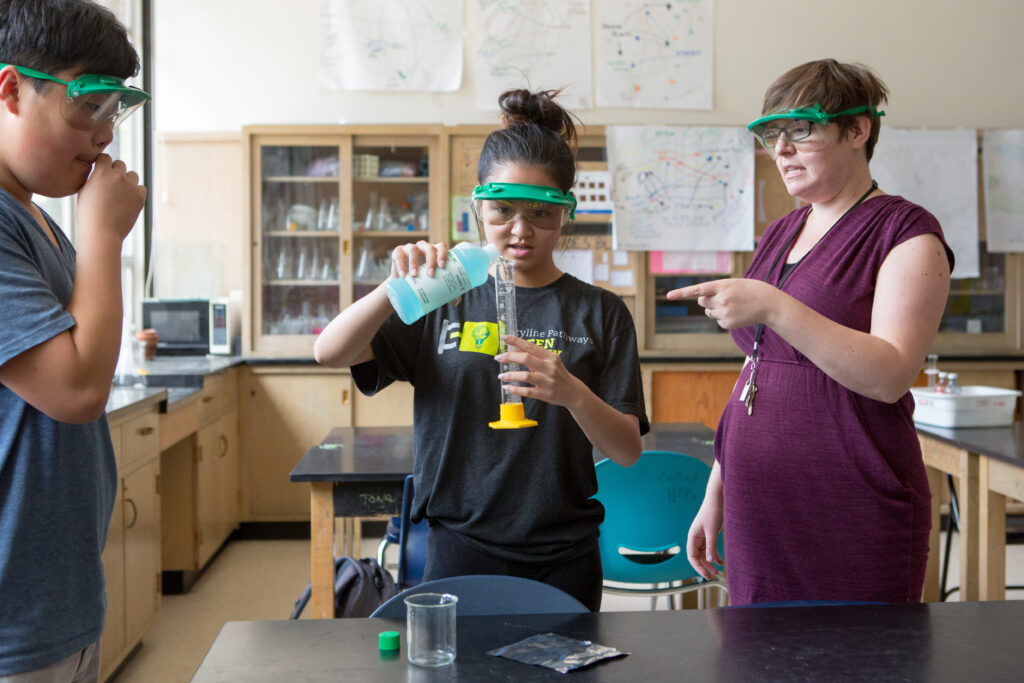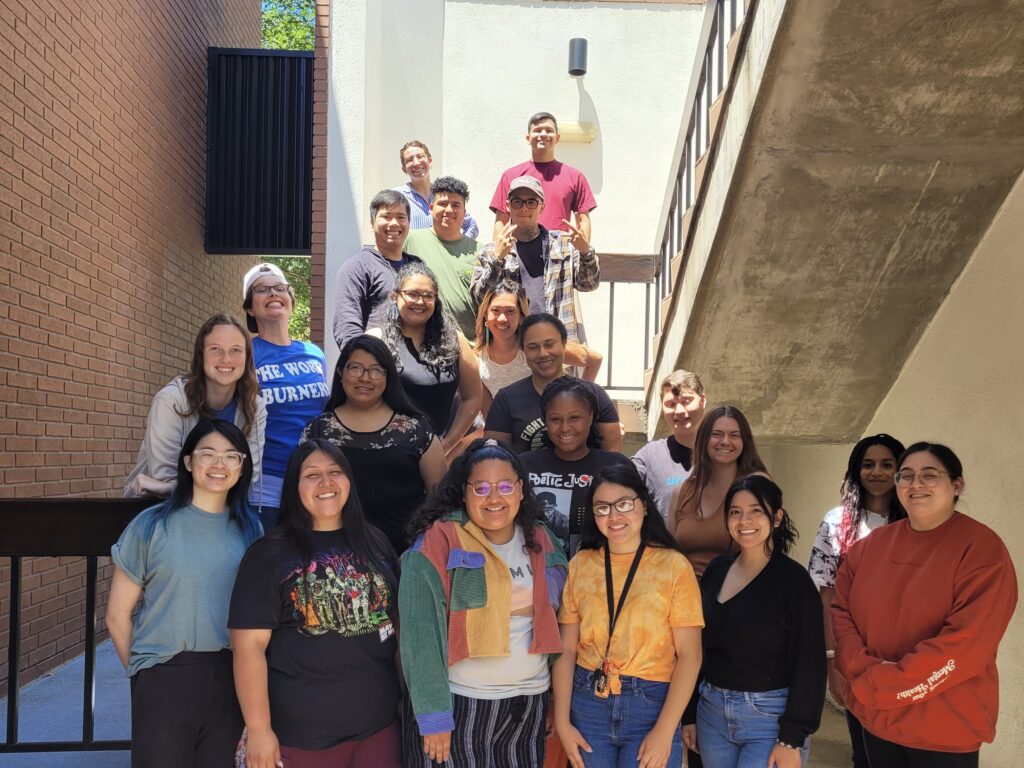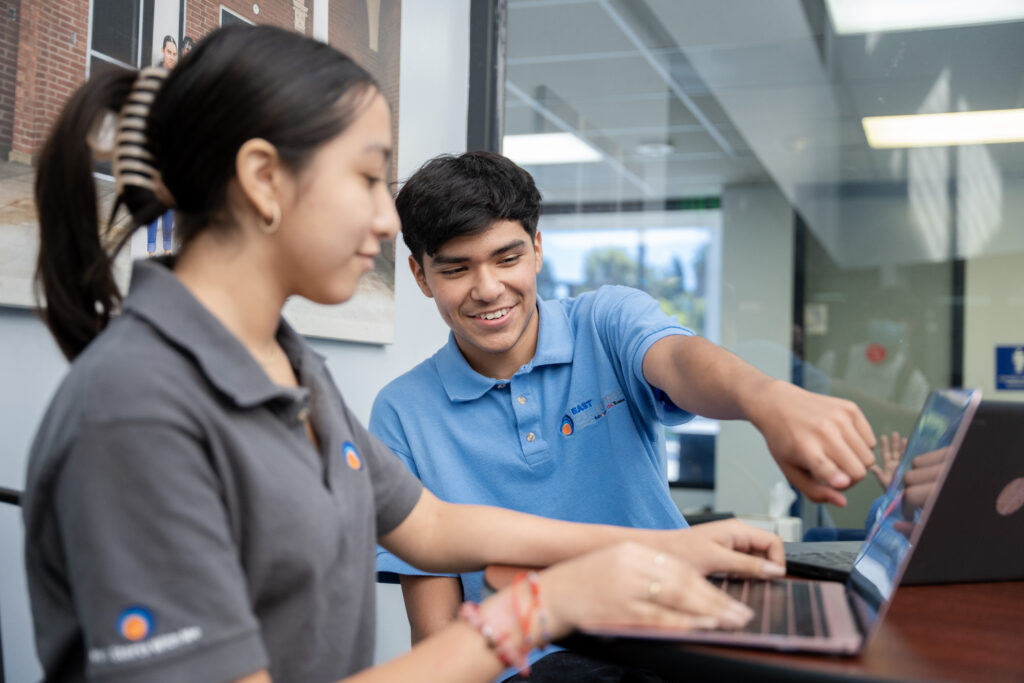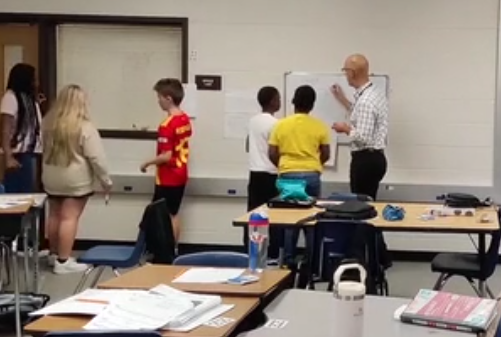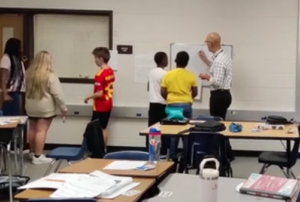
Students pass beneath Sather Gate and onto Sproul Plaza at UC Berkeley.
Credit: Steve McConnell / UC Berkeley
With the summer ending, I am spending most of my time finishing work for summer classes while figuring out how to prepare for one of the most pivotal points in my high school career: college applications.
I am tired of endlessly watching videos of students who were accepted into prestigious universities, explaining what they did in high school to get accepted, ranging from engaging in cancer research under university professors to being the youngest person ever to obtain a Google internship.
Now, it’s my turn to go through the process. I’ve put it off long enough. It is time to write the first draft of my college essay.
I opened up my document in Google Docs, filled with a list of random ideas I curated to fit the personal insight questions from the university. I typed away on my keyboard, only to end up with a singular sentence. I tried again; this effort resulted in random fragments of what I picture in my head — a broken draft filled with scrambled words that would not cooperate with one another.
“The sooner I get the draft done, the sooner I have one thing off my plate,” I grumble to myself.
I want to create a perfectly polished essay — to show I am a fit for the university of my choice. While this essay will acknowledge I have flaws, I can only hope that those flaws align with the college’s expectations.
Even if I manage to create a perfect application, the college admissions process itself raises concerns. Despite researching it for months, I still do not fully understand it.
I’m worried that I will do everything that is expected and still not be accepted anywhere. It happened to my friend. She did everything to ensure acceptance into a good college. She took Advanced Placement courses at her high school and had a cumulative weighted GPA of over 4.0. She also participated in many clubs. She worked hard all four years of high school but still wasn’t able to get into the university she wanted to attend.
Soon-to-be high school graduates must also decipher requirements from out-of-state and private schools, which adds to the pressure they feel as they navigate the constant changes in the college application process.
Applying for financial aid also contributes to stress and uncertainty. Will I qualify for federal student aid? Should I apply for financial aid packages from universities? Should I apply to dozens of private scholarships on the slim chance I could win scholarship money?
The college admissions process is always changing, but one of the most distinguished parts of my identity is being put to the test with the recent Supreme Court ruling on affirmative action in universities.
I’ve always been told that if you’re an Asian, you should never acknowledge it in the demographics area of your application because it will be to your disadvantage. I have no clue what to do now that race won’t be considered in admissions. I’m still contemplating whether I should note my race in my applications. Will it hurt my chances or not?
I feel anxious about what the upcoming application cycle is going to look like. The college admissions process has undergone many changes in the past few years, and it seems that it will go through more in the coming years.
These concerns keep me up at night. I worry about the unexpected challenges I may face as I apply to colleges. It seems that I won’t know whether I will be able to go to a four-year college until admission decisions are made.
I know that there are other options besides a four-year university. I can start my college career at a community college and transfer through the University of California Transfer Admission Guarantee program for one.
Regardless of all the paranoia and anxiety that come with applying to college, I know that it will be worth it in the end.
•••
Saffiya Sheikh is a student education reporter for Sac School Beat in Sacramento County and a senior at Horizon Charter School. She plans to major in political science when she goes to college.
The opinions expressed in this commentary represent those of the author. EdSource welcomes commentaries representing diverse points of view. If you would like to submit a commentary, please review our guidelines and contact us.

